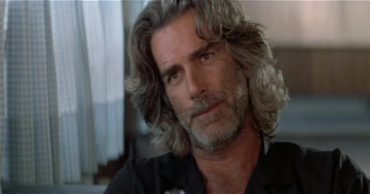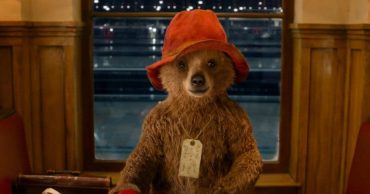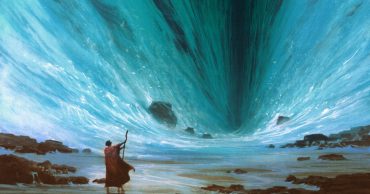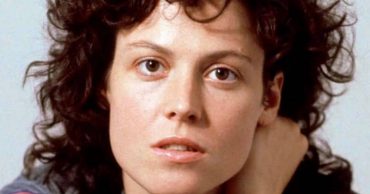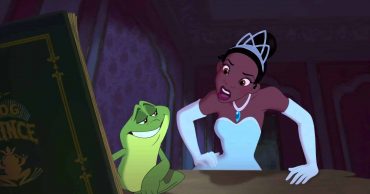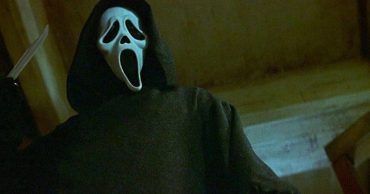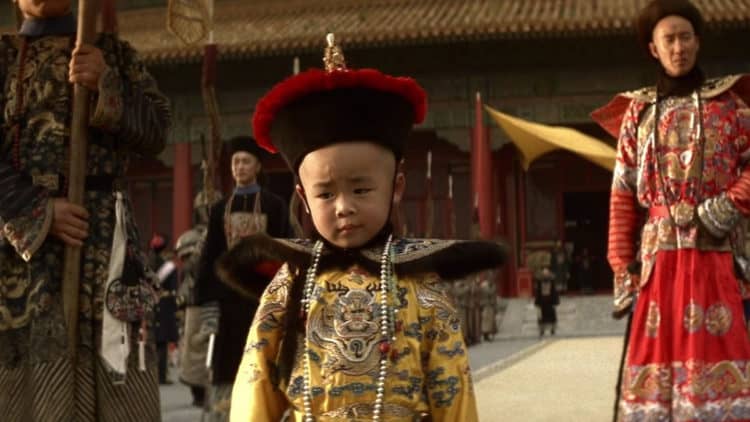
In the world of cinema, there are a few crafts that require an optimal mix of skills and creativity. They don’t just require the person to possess great skills in their craft but also require them to possess creativity that allows them to put these skills to the best use. Cinematography is one of these crafts. The definition of cinematography on paper is pretty specific — “the science or art of motion-picture photography”. The key words here are science and art, which means a cinematographer has to master both to deliver great work. Over the decades, there have been several cinematographers who have not just mastered this craft but have also taken great strides in new directions. Whether it is experimenting with their skills or breathing new life into the creative aspects of it all, they have proved to be pioneers in their own way. Here’s a list of some great cinematographers and their works that will give you a peek into this unique little space in cinema that helps us witness the world of entertainment in a whole new light.
William V. Skall
A cinematographer who entered the industry when it was still a world of black and white and then called the shots in Technicolor and contributed to the Golden Age of Hollywood, William V. Skall was born in Chicago on October 5, 1897. William was so passionate about getting into the business of cinema that he began his career as soon as he was out of school and in 1936, latched on to his first independent assignment as a chief cameraman with 20th Century Fox. In his works with Alfred Hitchcock, William’s camera skills were particularly noted in bringing to life the really long scenes that Alfred’s work was well-known for. Accepting the challenge and delivering the best of his work in movies like Rope, William’s work almost always found its way into the list of nominations at the Academy Awards. By the time he called it a day, this brilliant cinematographer had 10 nominations to his name and even shared a win with Joseph Valentine and Winton Hoch. This one was for the brilliant cinematography in the popular title Joan of Arc. Some of the other works that William was particularly noted for included Victoria the Great, The Forest Rangers, Kim, Dancing Pirate, Brave Warrior, Night and Day, Billy the Kid, To the Shores of Tripoli, The Time, The Place, and The Girl, Reap the Wild Wind, The Little Princess, and Quo Vadis.
Conrad Hall
Conrad Hall was born in French Polynesia in 1926 and was known for his cinematographic work in some famous titles during his time, even earning him a star on the Hollywood Walk of Fame. The International Cinematographers Guild, in recognition of his work, even placed him on the top ten list of most influential cinematographers in history. During his career, he won several accolades and awards, including multiple nominations across different platforms such as the American Society of Cinematographers, the British Academy Film Awards, the Online Film Critics Society Award for Best Cinematography, the New York Film Critics Circle Award for Best Cinematographer, and of course, the Academy Awards. His wins included 3 Academy Awards, 3 British Academy Film Awards, and 5 American Society of Cinematographers Awards. Some of the most prominent of his works include Road to Perdition, American Beauty, Love Affair, Searching for Bobby Fischer, Tequila Sunrise, Butch Cassidy and the Sundance Kid, A Civil Action, The Day of the Locust, The Professionals, Morituri, and In Cold Blood. In addition to films, Conrad was also known for his works on television, including The Outer Limits and television films such as It Happened One Christmas, Fanfare for a Death Scene, The Ghost of Sierra de Cobre, and The Unknown.
Robert Richardson
Robert Richardson is a renowned American cinematographer with loads of awards to his name and even more titles that he has lent his magic to. Born in Massachusetts in 1955, Robert entered the film industry in 1982, armed with a BFA from the Rohde Island School of Design and an MFA from the AFI Conservatory, and is still going strong as one of the best Hollywood has seen. With 3 Academy Award wins for his work in JFK, The Aviator, and Hugo, this brilliant cinematographer also has to his name several nominations and wins across other film boards. Some of Robert’s most notable works include titles such as Platoon, Born on the Fourth of July, Inglorious Basterds, The Hateful Eight, Once Upon a Time in Hollywood, Snow Falling on Cedars, The Good Shepherd, Salvador, Bringing Out the Dead, Shutter Island, Django Unchained, Breathe, The Four Feathers, The Horse Whisperer, A Few Good Men, Kill Bill: Volume 1 and Kill Bill: Volume 2. Robert is well-known for his multiple collaborations with Oliver Stone, Martin Scorsese, and Quentin Tarantino, each of them a perfect example of cinematographic excellence.
Arthur C. Miller
An American cinematographer with an impressive three Academy Award wins to his name, and several more nominations and wins across different film boards, Arthur C. Miller was born in 1895 in New York. It was a chance meeting with a person associated with the entertainment industry looking for a horserider that first got Arthur into the world of entertainment when he was only 13. Soon enough, he found himself drawn to the technical side of it all and learning the initial rules of the game as an assistant to Fred J. Balshofer, soon took off on his own. At the very young age of only 19, Arthur took on his first project as cinematographer — this was for an adventure series that was being made for television, The Perils of Pauline — and soon enough, he was taking on more and more work, even proving to be an influential person in the industry otherwise. Some of the most prominent titles to his name include The Mark of Zorro, The Hunting of the Hawk, His First Command, A Royal Scandal, The Walls of Jericho, Lady Rose’s Daughter, 36 Hours to Kill, Wee Willie Winkie, Susannah of the Mounties, Immortal Sergeant, The Keys of the Kingdom, This Above All, The Blue Bird, The Man Who Dared, The Coming of Amos, Rebecca of Sunnybrook Farm, and Son of Fury: The Story of Benjamin Blake. Arthur won Academy Awards for Best Cinematography for three of his works — The Song of Bernadette, How Green Was My Valley, and Anna and the King of Siam.
James Wong Howe
Born in China and making Hollywood his bastion for a great lineup of award-winning work, Wong Tim Jim, professionally known as James Wong Howe (Houghto), has to his name more than 130 films. With an impressive 10 Academy Awards nominations to his name and two wins — The Rose Tattoo and Hud — Wong remains one of the most endearing examples of how talent, skill, and creativity can help you find success even in the face of adversities. A rather disturbing and sad facet of Wong’s life was the ridicule he continued to face on the personal front due to his race and country of origin, despite the amazing success he found on the professional front, delivering movies that were the toast of the town at the time. In addition to the two movies that got him his Academy Awards, other nominated titles that Wong lent his expertise to as a cinematographer include Algiers, Abe Lincoln in Illinois, Kings Row, The North Star, Air Force, The Old Man and the Sea, Seconds, and Funny Lady.
Freddie Young
As far as cinematographic excellence goes, Lawrence of Arabia is considered one of the most brilliant works the world of cinema has ever seen, and credit for this excellent work goes to the British cinematographer Freddie Young. In addition to an Academy Award win for this historical drama, Freddie also picked up two other Academy Awards for two more of his works — Ryan’s Daughter and Doctor Zhivago. In addition to taking on the responsibility of cinematographer, Freddie was also known to take on the Director of Photography’s chair in many of his projects. Tagged as one among the ten most influential cinematographers in history by the International Cinematographer’s Guild, Freddie has to his name quite a few popular projects. These include Nicholas and Alexandra, 49th Parallel, Lust for Life, Goodbye, Mr. Chips, You Only Live Twice, a James Bond title, A Peep Behind the Scenes, Calling Bulldog Drummond, The Barretts of Wimpole Street, Solomon and Sheba, Sword of the Valiant, Two’s Company, London Melody, A Cuckoo in the Nest, Night of the Garter, Bhowani Junction, and Caesar and Cleopatra, among several others. Among other pioneering works, he was also the first English cinematographer to work in CinemaScope.
Vittorio Storaro
An Italian cinematographer who is accepted the world over as one of the best creative minds to represent the world of cinematography, Vittorio Storaro has a long lineup of great works to his name and is a member of the American Society of Cinematographers as well as its Italian counterpart, the Associazione Italiana Autoridella Fotografia Cinematografica. Renowned for his experimentation with colors, in line with the psychological influence colors have on a person, Vitorrio, now aged 81, is still an influential presence in the world of cinema. Some of the best works that have won him awards and nominations include Apocalypse Now, The Last Emperor, Reds, Dick Tracy, The Sheltering Sky, Peter the Great, Frank Herbert’s Dune, Tango, no me dejas nunca, and Dune. He has also been honored with the Lifetime Achievement Award by the American Society of Cinematographers in 2001 and the International Film Festival of India in 2020. In addition to his award-winning and nomination-winning titles, some other noteworthy works from his portfolio include Last Tango in Paris, 1900, Ishtar, Tucker: The Man and His Dream, New York Stories, Cafe Society, A Rainy Day in New York, Wonder Wheel, The Bird with the Crystal Plumage, Luna, New York Stories, Dick Tracy, One From the Heart, and Bulworth.
Winton C. Hoch
One of the great technical minds who contributed to the development of Technicolor, Winton C. Hoch’s understanding of how colors worked helped him deliver some of the most impressive works of his time. Born in 1905 in Iowa, his job as a research scientist in the company Technicolor is what first introduced him to the finer workings of all that influenced the entertainment industry. Soon enough, the experience he gained on the technical front helped him explore the creative side of cinematography too, and in only a matter of a few years, Winton began to be regarded as one of the most influential minds in his craft. Some of the most prominent works Winton delivered to audiences included Aliens From Another Planet, The Banana Splits Adventure Hour, The Time Tunnel, Lost in Space, Robinson Crusoe on Mars, The Redhead from Wyoming, 3 Godfathers, Memories of Europe, Natural Wonders of the West, Victoria and Vancouver: Gateways to Canada, St. Helena and Its ‘Man of Destiny’, This Earth is Mine, The Lost World, and The Magical World of Disney, among others.
Joseph Ruttenberg
Born in Ukraine and spending his life in the US, Joseph Ruttenberg was one of the most acclaimed photojournalists and cinematographers of his time, with a membership invitation from the American Society of Cinematographers proving his immense contributions to the field. He was nominated in the Best Cinematography category at the Academy Awards an impressive 10 times and took home four of these prestigious awards for his work in The Great Waltz, Mrs. Miniver, Somebody Up There Likes Me, and Gigi. He also won a Golden Globe Award for Brigadoon. Other works that earned him Academy Award nominations included Butterfield 8, Julius Caesar, Gaslight, Madame Curie, Dr. Jekyll and Mr. Hyde, and Waterloo Bridge. The last of Joseph’s projects in the 1960s included The Subterraneans, Two Loves, Bachelor in Paradise, Ada, Who’s Got the Action, The Hook, A Global Affair, It Happened at the World’s Fair, Who’s Been Sleeping in My Bed, Harlow, Sylvia, Love Has Many Faces, The Oscar, and Speedway.
Haskell Wexler
Haskell Wexler was not just a cinematographer. As a multitalented personality, he also donned the hats of film producer and director on occasion. But he truly impressed in the cinematographer’s chair and this excellence even saw him find a place on the International Cinematographers Guild’s list of history’s ten most influential cinematographers. During his close to seven decades in the business, Haskell notched five Academy Award nominations in the category of Best Cinematographer and registered two wins. Initially beginning his journey in filmmaking through industrial films, he learned the ropes as an assistant cameraman and was soon lending his expertise to documentary features, shorts, dramas, and then, entire documentary films. As an active cameraman, he was the first to receive a Lifetime Achievement Award from different cinematic bodies such as the American Society of Cinematographers, the Independent Documentary Association, and the Society of Operating Cameramen. Also popular as an activist, Haskell was bestowed with the Humanitarian Award by the Location Managers Guild of America. Some of Haskell’s most popular works include Matewan, From Wharf Rats to Lords of the Docks, Medium Cool, Bus Riders’ Union, Interviews with My Lai Veterans, Bringing King to China, Good Kurds, Bad Kurds: No Friends but the Mountains, Paul Jacobs and the Nuclear Gang, Bound for Glory, Underground, Days of Heaven, Who’s Afraid of Virginia Woolf?, and In the Heat of the Night.
We Just Couldn’t Get Every Cinematographic Stalwart in Here for You, So Don’t Forget to Check Out Our Second List!
We know there are so many great cinematographers out there, and although it would be impossible to get all of them onto our lists, we can at least try! So, to honor the works of some more cinematographers and bring them to you, we have gone ahead and created another list of Top Cinematographers and Their Works You Will Fall in Love With. This one has some great names like W. Howard Greene, Victor Milner, Harry Stradling, Roger Deakins, Robert Surtees, George J. Folsey, Charles Lang, Leon Shamroy, Ray Rennahan, Charles Rosher, all masters of their craft!
 Follow Us
Follow Us
